(Plymouth Congregational Church, Omaha, Nebraska, March 24, 1913.)
It’s a paradox — and probably a testimony to the human spirit — that some of history’s worst natural disasters have given rise to humor and even fascinating meteorological folklore. Take Voltaire’s great Candide, a scathing satire on philosophical and religious optimism. Candide, which later inspired one of Leonard Bernstein’s musicals, was penned in response to the worst European earthquake of the 18th century, the 1755 All Saints’ Day quake in Lisbon, Portugal, when over 10,000 people in Europe’s most devout city were crushed in church, burned or drowned by a massive tidal wave on one of the holiest days in the Christian year. More than just a major seismological event, the Lisbon quake turned out to be a milestone in the history of philosophy.
Easter Sunday, March 23, 1913, was another such day, though not nearly as significant. That evening, as Christians were still celebrating the Resurrection, an F4 tornado struck Omaha, Nebraska, killing over a hundred people. As the storm clouds moved east, hitting other towns, a huge twister struck Terre Haute, Indiana, just before midnight. The 1913 Easter Sunday tornado killed seventeen people on the south side of town, including a 75 year old man, an eight year old boy, a mother and her baby, and an infant just one day old.
The skies were especially cruel that March. Most of Indiana and the Midwest were already suffering from extreme floods. The raging, icy Wabash had inundated part of Terre Haute before the twister struck. Upstream in Peru, Indiana, the roaring river wreaked havoc on the Hagenbeck-Wallace Circus, which had its winter quarters along the Wabash. Exotic animals like elephants and tigers, drowned in the freezing water, washed up downstream. It was a terrible month for Hoosiers and everybody else in the region.
(Omaha Daily Bee, March 25, 1913.)

(The March 1913 twister destroyed part of Terre Haute’s Root Glass Factory, manufacturer of Coca-Cola bottles. Fires caused by lightning, oil lamps and downed electric wires hindered the work of rescuers and firemen.)
(The storm crossed into Parke and Clay counties and obliterated the tiny mining town of Perth north of Brazil. Yet with its coal exhausted, Perth had mostly scattered to the winds by the time William Travis wrote his county history in 1909. Indianapolis News, March 25, 1913.)
Despite the real tragedy of these events, Midwestern tornado lore is full of comic scenes and bizarre escapes — stories of people spared by the “queer antics” and “strange vagaries” of providence, luck and the wind. As we officially head into storm season, here’s a few tales from the breezy side of life.
Writer William Least Heat-Moon wrote the most famous essay on freaks of the storm. “Under Old Nell’s Skirt” came out as a chapter in his PrairyErth (1991), a long meditation on the history of one county in Kansas’ Flint Hills. He talked to old-timers there. They told him all about the topic:
They tell of ponds being vacuumed dry, eyes of geese sucked out, chickens clean-plucked from beak to bum, water pulled straight up out of toilet bowls, a woman’s clothes torn off her, a wife killed after being jerked through a car window, a child carried two miles and being set down with only scratches, a Cottonwood Falls mother (fearful of wind) cured of chronic headaches when a twister passed harmlessly within a few feet of her house, and, just south of Chase, a woman blown out of her living room window and dropped unhurt sixty feet away and falling unbroken beside her a phonograph record of “Stormy Weather.”
Columnist Dorothy J. Clark revisited some of these “strange happenings” on the forty-fifth anniversary of the tornado that struck the Wabash Valley. Her fascinating column (most of it plagiarized verbatim from an older book) came out in the Terre Haute Tribune on March 23, 1958.
(Terre Haute Tribune, March 23, 1958.)
The Indianapolis News carried a few more of these odd news items — including the report of an old theory that the bluffs of the Wabash River (to which the town owed its French name, “high land”) deflected twisters by means of “mineral deposits attracting the electricity.” (A similar belief or prophecy about Omaha’s immunity to twisters was also thrown on the rubbish heap of bogus theories that night.)
(Indianapolis News, March 24, 1913.)
A small book called Terre Haute’s Tornado and Flood Disaster — the source of some of Dorothy Clark’s accounts — recounts a few more of the wild antics of the breeze.
There’s one other bit of strange coincidence from the time of the twister. A moralizing pastor, Dr. J. Aspinwall McCuaig, had just visited Terre Haute. The reverend may have still been in town on the day of the Easter Sunday disaster. A Canadian originally from Scotland, McCuaig was one of the heads of the National Christian League for the Promotion of Purity, an organization established in New York City in 1886. He came to Indiana to deliver a series of lectures and check in on the effects of the state’s infamous forced sterilization law, which as a eugenicist, McCuaig supported. (Like Indianapolis’ Oscar McCulloch, head of the liberal Plymouth Congregational Church downtown, McCuaig was one of the surprisingly large number of “progressive” Christian ministers to speak out in favor of eugenics, which sought to reduce crime and social evils by preventing many of the poor and “feeble-minded” from reproducing.)
McCuaig, who lectured on prostitution, alcohol, and nude pictures in bars, hated Terre Haute — a rough railroad town back in the golden days of organized labor, a place famous for its saloons, brothels and easily-bribed Democratic government. On the day of the Easter twister, McCuaig apparently was still in town, lambasting the city, calling it worse than Chicago. It wouldn’t be surprising if he moralized — rather obnoxiously — on the hand of God reaching out of the skies.
(Indianapolis News, March 24, 1913.)
(Omaha Daily Bee, March 29, 1913.)
Contact: staylor336 [AT] gmail.com




















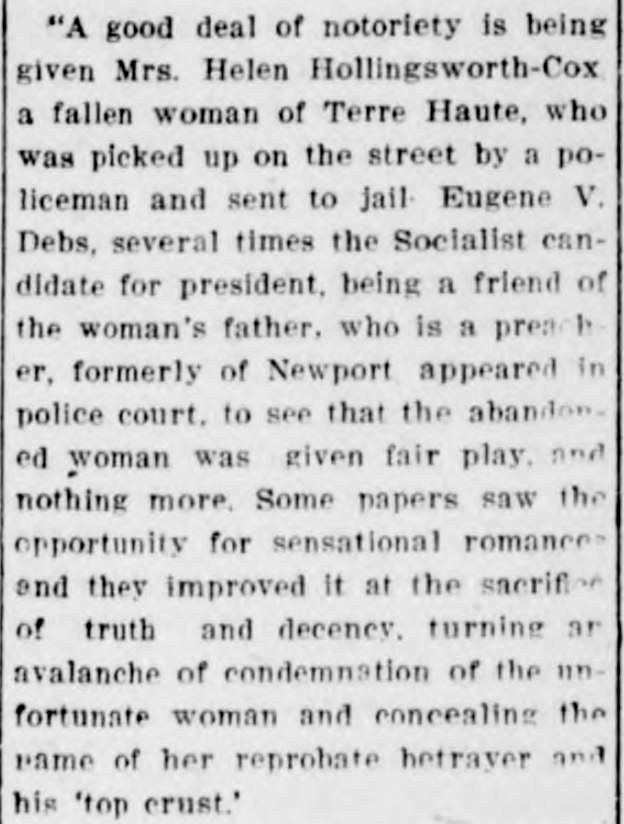
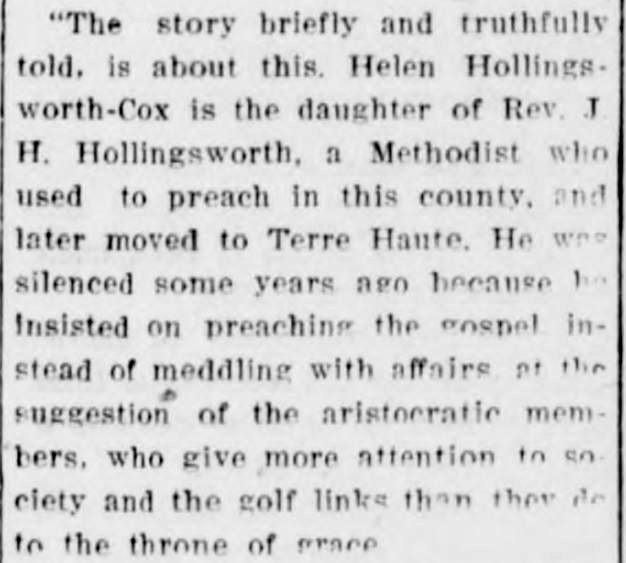

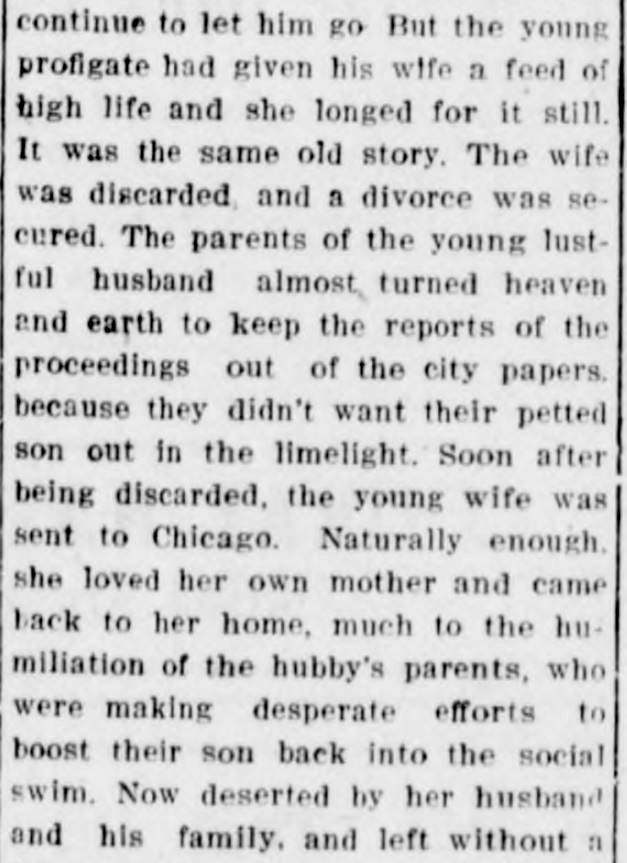
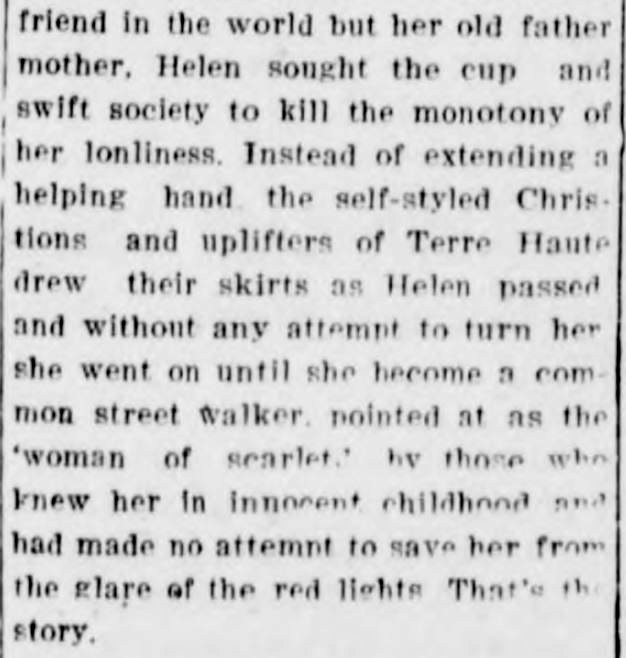
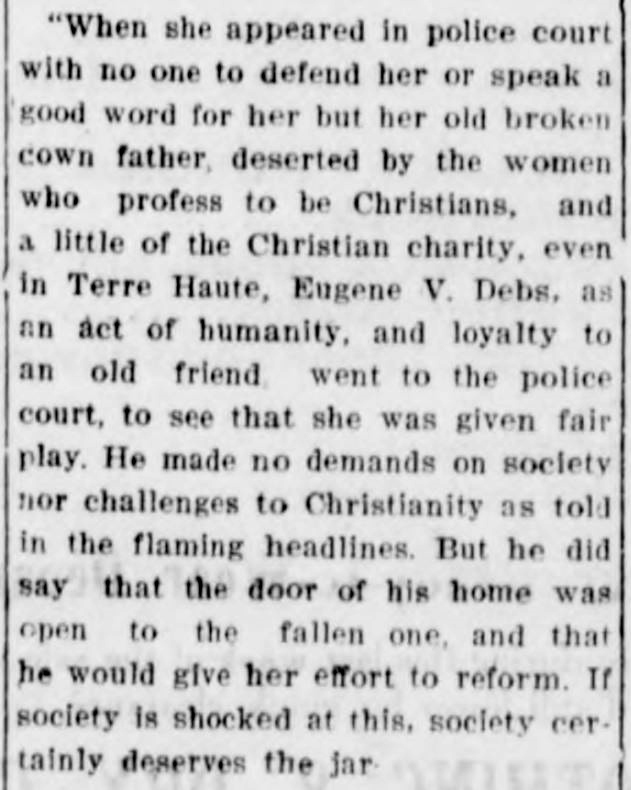



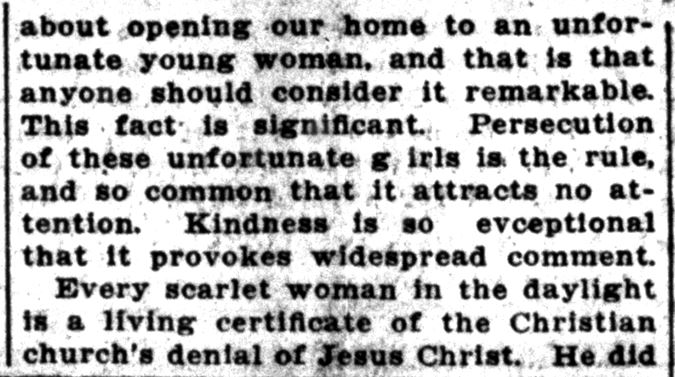
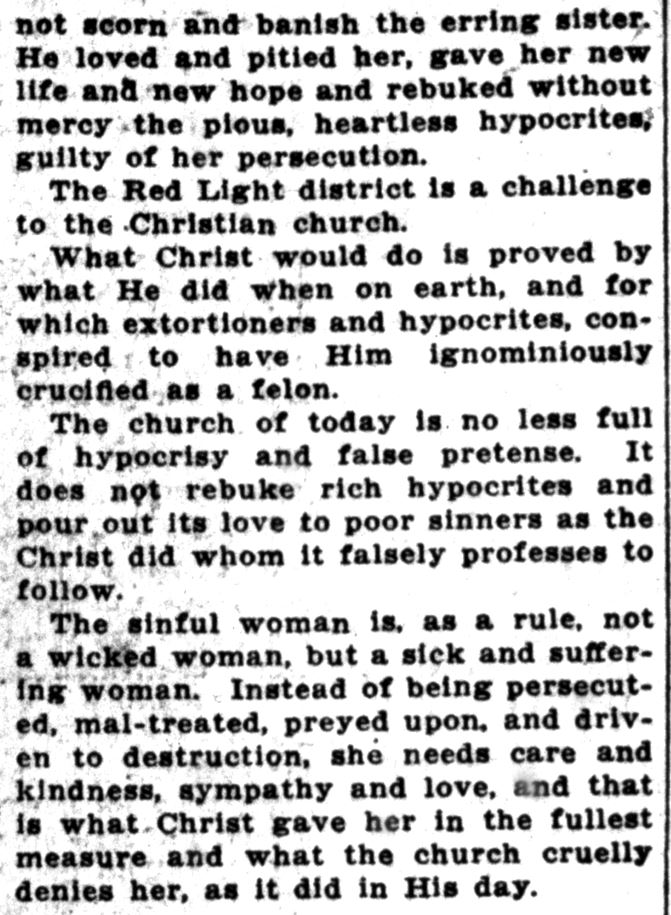 (Lake County Times, June 22, 1913. Hoosier State Chronicles recently portrayed Muncie’s
(Lake County Times, June 22, 1913. Hoosier State Chronicles recently portrayed Muncie’s 
































































